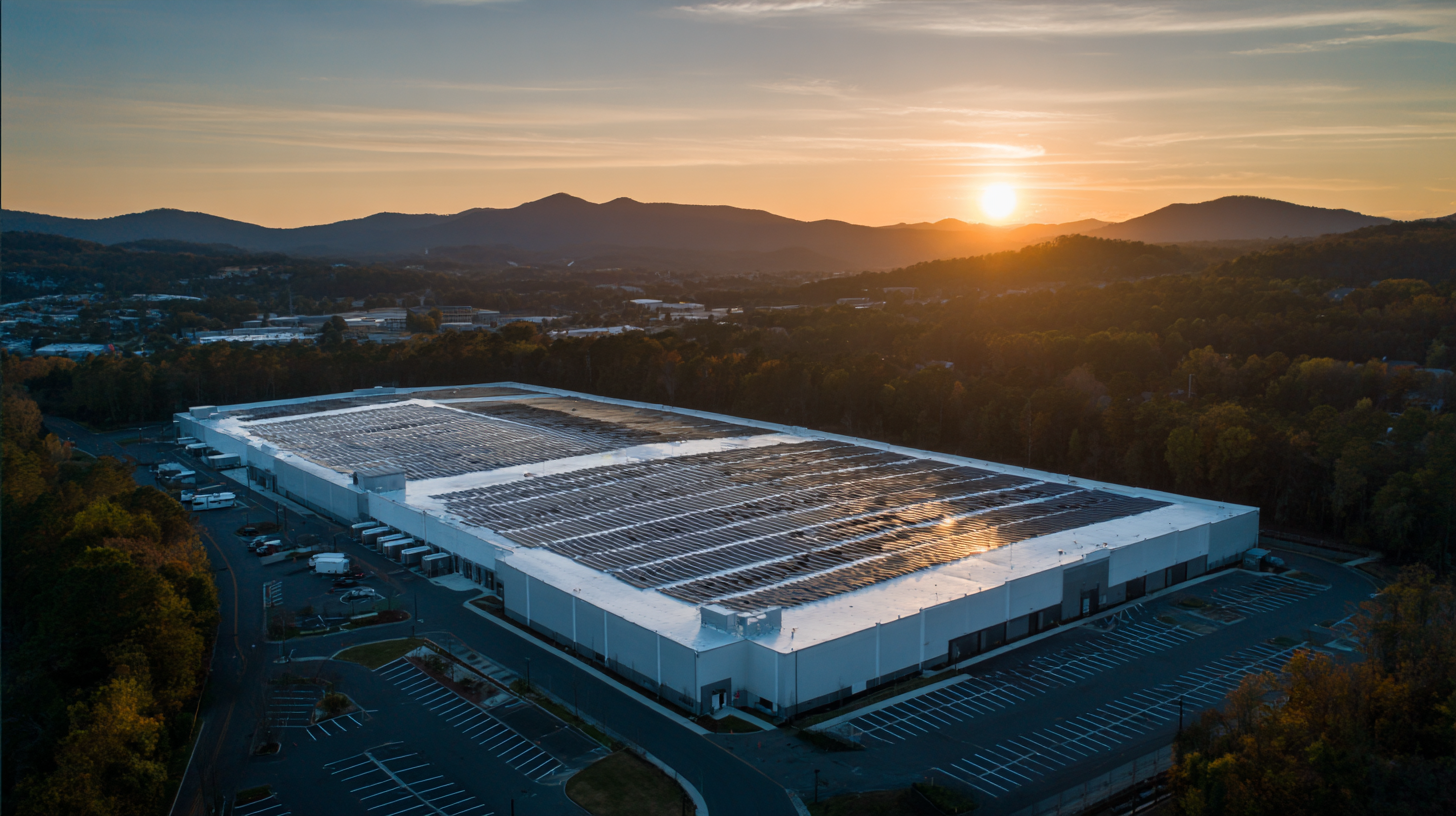ALL PRODUCTS
- Solar Panel
- Hybrid Inverter
- Lithium Battery
GSB SOLAR LITHIUM BATTERIES
- Gel Battery
- Solar Street Lights
- Pump Inverter
In an era where sustainability and energy efficiency are paramount, businesses are increasingly turning to innovative solutions to power their operations. The concept of the solar warehouse has emerged as a frontrunner in maximizing energy efficiency while reducing operational costs. This ultimate guide delves into the best practices and technologies related to solar warehouses, illustrating how these facilities can harness renewable energy to create a more sustainable business model.

By integrating solar power installations with warehouse operations, companies can not only lower their carbon footprint but also benefit from significant savings on electricity bills. As we explore various strategies and case studies, this guide aims to provide actionable insights that will empower businesses to optimize their energy consumption, enhance productivity, and lead the charge towards a greener future.
Embracing solar warehouse solutions is not just a trend; it is a revolutionary step towards sustainable logistics and energy management.
As warehouses grow more complex and energy-intensive, understanding the basics of solar energy becomes essential. Solar energy is not just a sustainable resource; it can significantly reduce operational costs and carbon footprints. For warehouses, which often have expansive roof space, harnessing solar power can be a game-changer. Reports indicate that integrating solar panels can lead to energy savings of up to 30% annually, allowing for reinvestment into other operational areas.

Tips: Consider choosing solar systems designed specifically for commercial applications to maximize efficiency. Conduct a solar feasibility study to assess your facility's potential for solar generation based on its location, roof type, and local incentives.
Moreover, recent mandates like the Japanese government's requirement for solar panel installation in energy-intensive businesses signal a broader shift toward renewable energy. Legislation is increasingly favoring the adoption of solar solutions in warehouses, with proposals to make new distribution centers "solar-ready." These measures not only address climate goals but also align with the growing emphasis on Environmental, Social, and Governance (ESG) criteria, driving modern warehouse retrofitting efforts.
Tips: Engage with energy efficiency consultants to identify retrofitting opportunities that meet ESG standards while optimizing your energy consumption. Leveraging available government incentives can significantly offset initial installation costs.
When it comes to maximizing energy efficiency in warehouse operations, selecting the right solar panels is crucial for achieving optimal output. The efficiency of solar panels can vary significantly depending on their type, material, and technology. Monocrystalline panels, known for their high efficiency and longevity, are often the best choice for warehouses with limited roof space, providing maximum power generation. On the other hand, polycrystalline panels can be a more cost-effective option, offering a balanced performance for larger spaces where budget constraints come into play.
**Tips:** When evaluating potential solar panel options, consider factors such as the panel's degradation rate, warranty length, and performance in low-light conditions. These aspects can significantly impact the long-term efficiency of your solar system. Additionally, integrating solar panels with smart energy management systems can enhance overall performance by optimizing energy use based on real-time demands.
Furthermore, don’t overlook the importance of professional installation. Proper alignment and positioning of solar panels can increase sunlight exposure, leading to higher energy production. Engaging certified installers ensures that your system is set up to operate efficiently and meets all necessary regulations, providing peace of mind and maximizing your investment in solar technology.
| Panel Type | Efficiency (%) | Power Output (W) | Warranty (Years) | Cost ($/W) |
|---|---|---|---|---|
| Monocrystalline | 20-23 | 250-400 | 25 | 0.80-1.20 |
| Polycrystalline | 15-20 | 240-370 | 25 | 0.70-1.00 |
| Thin Film | 10-13 | 100-200 | 10-25 | 0.50-0.90 |
| Bifacial | 20-25 | 300-500 | 30 | 1.00-1.50 |
Integrating solar storage solutions is a crucial step for warehouses aiming to enhance their energy efficiency. According to a report by the International Renewable Energy Agency (IRENA), integrating solar and storage can lead to an average increase in energy efficiency of up to 30% in industrial settings. This combination allows warehouses to harness solar energy generated during the day and store excess energy for use during peak demand times or emergencies, significantly reducing dependency on grid electricity.
**Tip:** When selecting a solar storage system, consider battery types such as lithium-ion or flow batteries. Each type offers unique advantages in terms of lifecycle, discharge rates, and cost, allowing you to tailor your energy strategy based on specific operational needs.
Furthermore, the U.S. Energy Information Administration (EIA) reports that businesses using solar storage can save between 15-40% on their energy bills annually, depending on their location and energy consumption patterns. By employing advanced battery management systems, warehouses can optimize the discharge and charge cycles, maximizing the benefits of their solar investments.
**Tip:** Regular maintenance and monitoring of your solar storage systems are essential. Investing in a robust monitoring platform can help identify inefficiencies and ensure your storage solutions operate at peak performance, providing long-lasting savings and reliability.
This chart illustrates key performance metrics of solar storage solutions for warehouses, highlighting the solar panel output, storage efficiency, utilization rate, and potential cost savings achieved through implementing solar technologies.
Implementing Smart Energy Management Systems (EMS) has become crucial for maximizing energy efficiency in warehouses. As industries increasingly turn toward sustainable practices, integrating advanced EMS can significantly reduce operational costs and enhance productivity. In fact, the global market for IoT energy management is anticipated to grow from $70.58 billion in 2023 to $222.56 billion by 2030, demonstrating a remarkable compound annual growth rate of 17.8%. This trend is driven by the increasing adoption of artificial intelligence in energy management, which enables businesses to monitor their energy consumption in real-time and optimize usage patterns accordingly.

Tips for Effective Implementation:
By focusing on these strategic approaches, warehouses can significantly enhance their energy efficiency, reduce costs, and contribute to a more sustainable future.
In today's rapidly evolving industrial landscape, the integration of solar solutions in warehouse operations is not just a trend but a necessity for businesses seeking to enhance their energy efficiency. A significant number of companies are actively shifting towards solar warehouse implementations, driven by the desire to reduce operational costs while driving sustainability. This movement is exemplified by case studies from various enterprises that have successfully integrated solar technologies, showcasing significant reductions in energy expenditures and carbon footprints.
For instance, one large logistics company reported a 40% decrease in energy costs after installing solar panels across its facilities, enabling a more streamlined operation while benefiting the environment.
Furthermore, these solar implementations align with broader market trends emphasizing ESG (Environmental, Social, and Governance) factors in investment decisions. As the real estate sector increasingly recognizes the financial implications of sustainability practices, warehouses utilizing solar solutions stand out as attractive options for investors. These successful case studies not only highlight the operational benefits of solar technologies but also illustrate how effective energy management can lead to long-term financial gains, making solar warehouses a pivotal element in the future of sustainable industrial practices.






